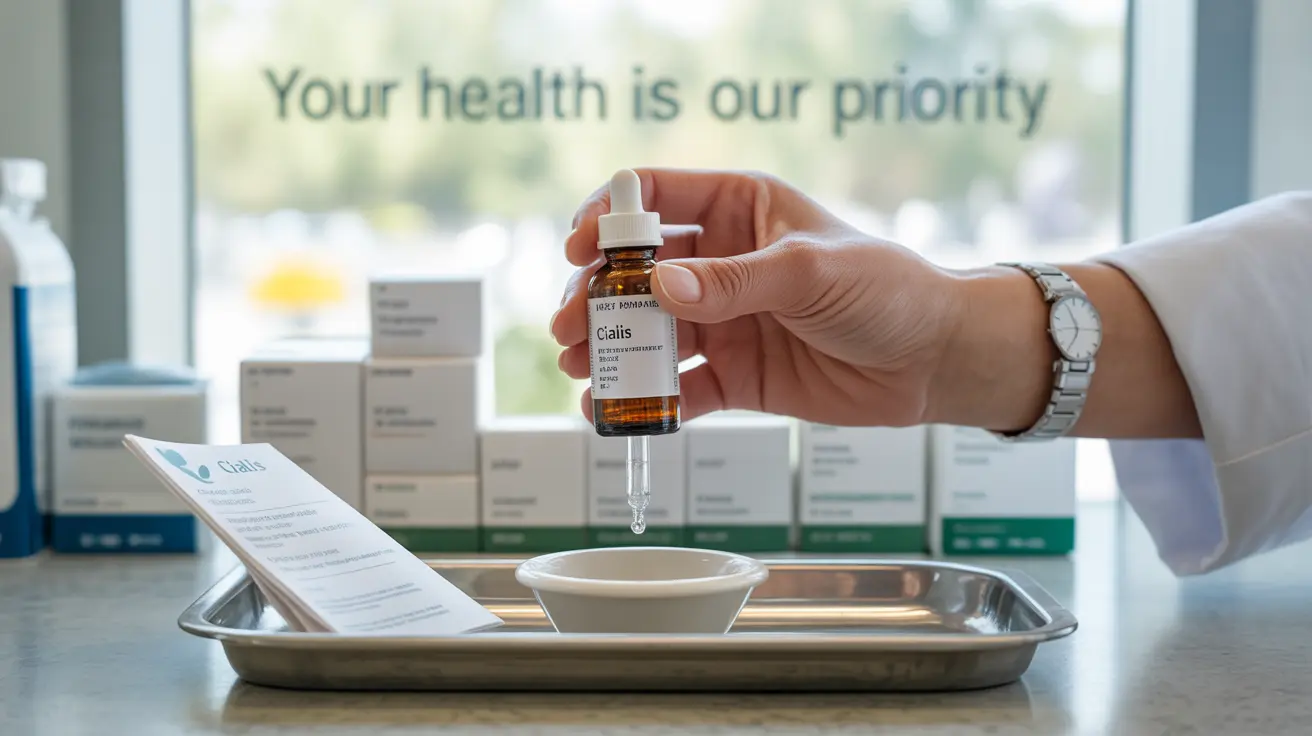For individuals managing erectile dysfunction (ED), liquid Cialis represents an alternative formulation of tadalafil, the active ingredient in traditional Cialis tablets. This comprehensive guide examines what you need to know about liquid tadalafil, including its effectiveness, safety considerations, and proper usage guidelines.
What is Liquid Cialis?
Liquid Cialis is a compounded form of tadalafil, created by specialized pharmacies as an alternative to standard tablet formulations. This liquid version contains the same active ingredient as regular Cialis but comes in a solution form that can be measured and administered using a dropper or oral syringe.
Understanding FDA Approval Status
It's crucial to understand that while tadalafil (the active ingredient in Cialis) is FDA-approved for treating erectile dysfunction, most liquid formulations are compounded medications. This means they are specially prepared by pharmacies and do not carry the same FDA approval as manufactured tablet forms.
Effectiveness and Absorption
Liquid tadalafil works through the same mechanism as tablet forms, inhibiting PDE5 to improve blood flow to erectile tissue. Some users report that liquid formulations may be absorbed more quickly due to their pre-dissolved state, though individual experiences can vary.
Key Benefits of Liquid Forms
Liquid formulations offer several potential advantages:
- Easier swallowing for those who struggle with tablets
- More precise dose adjustment capabilities
- Potentially faster absorption rates
- Alternative option for those with specific medical needs
Safety Considerations and Risk Factors
When considering liquid Cialis, several important safety factors must be evaluated:
- Quality control variations between compounding pharmacies
- Proper storage requirements to maintain stability
- Potential contamination risks if not handled correctly
- Importance of accurate dosing measurements
Proper Storage and Handling
To maintain the safety and effectiveness of liquid tadalafil:
- Store at room temperature away from direct sunlight
- Keep the container tightly sealed when not in use
- Check the expiration date before each use
- Follow proper measuring techniques consistently
Dosing Guidelines
Proper dosing of liquid Cialis requires careful attention to measurement and timing:
- Use only the provided measuring device
- Follow prescribed dosing instructions exactly
- Take the medication at least 30 minutes before sexual activity
- Never exceed the maximum recommended daily dose
Frequently Asked Questions
Is liquid Cialis (liquid tadalafil) FDA-approved for treating erectile dysfunction? No, while tadalafil itself is FDA-approved, most liquid formulations are compounded medications that don't carry specific FDA approval. They must be obtained through licensed compounding pharmacies under proper medical supervision.
How does liquid Cialis compare to tablet Cialis in terms of effectiveness and onset time? Liquid Cialis contains the same active ingredient as tablet forms and generally shows similar effectiveness. Some users report faster onset times due to the pre-dissolved state, though clinical evidence comparing the two forms is limited.
What are the risks and safety concerns associated with using compounded liquid Cialis for ED? Key risks include potential quality variations between compounding pharmacies, proper storage requirements, accurate dosing challenges, and the importance of obtaining the medication from licensed providers. Working closely with healthcare providers helps minimize these risks.
How should I measure and take the correct dose of liquid Cialis? Use only the provided measuring device (dropper or oral syringe), follow prescribed dosing instructions carefully, and take the medication at least 30 minutes before sexual activity. Never adjust dosing without consulting your healthcare provider.
Who might benefit most from using liquid Cialis instead of traditional tablets? Liquid Cialis may be particularly beneficial for individuals who have difficulty swallowing tablets, need precise dose adjustments, or prefer a potentially faster-absorbing formulation. However, suitability should be determined through consultation with a healthcare provider.




